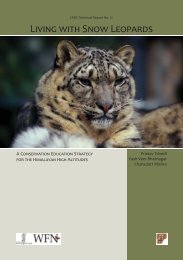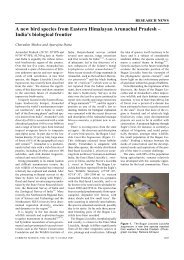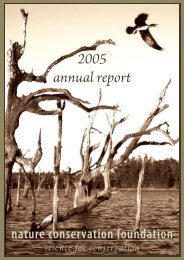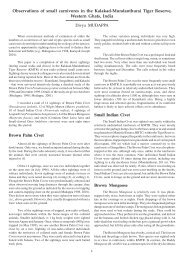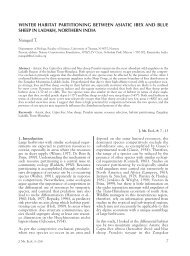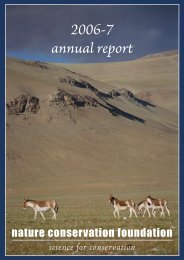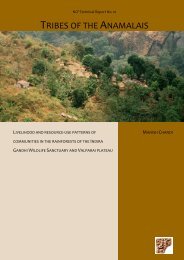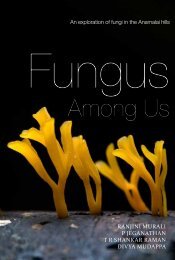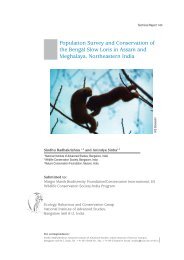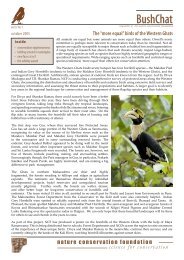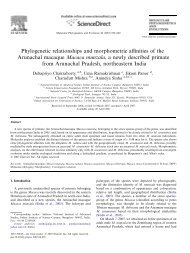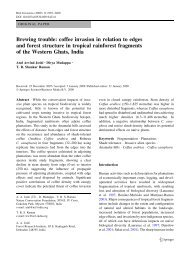towards project snow leopard - Nature Conservation Foundation
towards project snow leopard - Nature Conservation Foundation
towards project snow leopard - Nature Conservation Foundation
You also want an ePaper? Increase the reach of your titles
YUMPU automatically turns print PDFs into web optimized ePapers that Google loves.
80 • Appendix 1<br />
continuing and there are few or no differences in land-use within and outside PAs.<br />
3. Alternate/Better Strategy: <strong>Conservation</strong> and Management Philosophy<br />
3.1. <strong>Conservation</strong> and management philosophy<br />
3.1.1. Need to involve communities: Given the widespread occurrence of wildlife on<br />
common land, and the continued traditional land-use within protected areas, it<br />
is imperative that wildlife conservation efforts be made participatory both within<br />
and outside protected areas. Such a participatory approach will be facilitated by the<br />
relatively intact and functional traditional administrative bodies such as the village<br />
councils in most of the high altitude landscape. The success of recent experiments in<br />
participatory conservation underscores the desirability and feasibility of participatory<br />
wildlife management in the Indian high altitudes.<br />
3.1.2. Need to provide economic and other incentives to local communities -- devising ways<br />
of making conservation pay: There are often untapped opportunities in biodiversityrich<br />
areas to generate local interest and support for conservation through income<br />
generation. This can be done by harnessing local resources through community-based<br />
tourism and cultivation of medicinal plants. In addition, incentive programmes can<br />
be instituted that alleviate losses due to depredation.<br />
3.1.3. Need to couple local participation with effective enforcement: As mentioned in 3.1<br />
above, a participatory approach is essential, but it needs to be coupled with a strong<br />
enforcement.<br />
3.1.4. Gender balance and the role of women in conservation efforts: The village communities’<br />
role as decision makers and beneficiaries of conservation efforts is acknowledged. In<br />
many parts of the range there is a gender imbalance whereby women are kept away<br />
from most village or Panchayat level decision making. PSL needs to facilitate a greater<br />
role for women in biodiversity conservation.<br />
3.2. On-ground management<br />
3.2.1. Need for zonation of the entire landscape, including PAs: It is impractical to have large<br />
National Parks with no zonation, where essentially the entire area is considered as a<br />
‘core zone’. PAs should be zoned according to values in smaller pockets not necessarily<br />
as large cores, but a mosaic of smaller, manageable cores, spread in an area with<br />
tempered human use. Other areas for incentive programmes such as communitybased<br />
tourism need to be established. Areas outside existing PA network should<br />
be reviewed and areas with significant endangered wildlife populations need to be<br />
protected by small cores. The smaller cores should act as ‘source’ populations for<br />
sustaining populations of endangered species outside.<br />
3.2.2. Need to rationalize PAs: Some PAs may have too large an area to be viable. There is a



